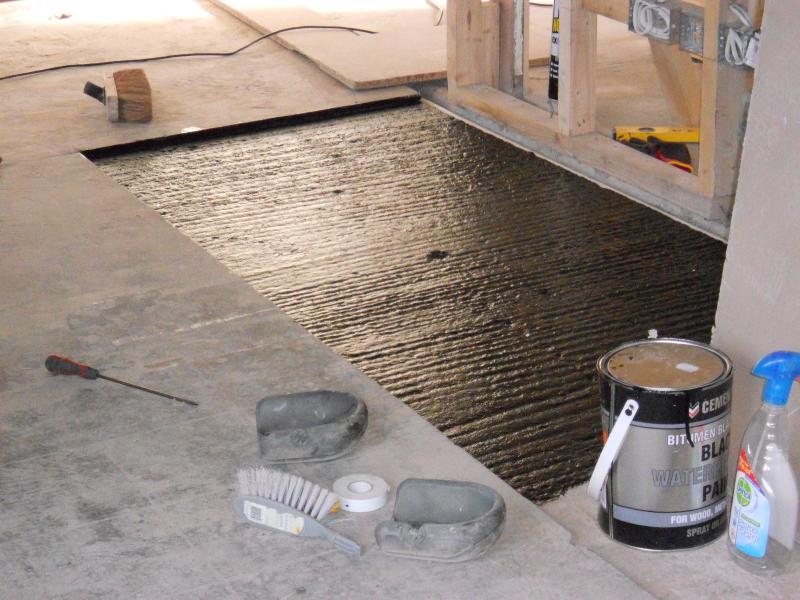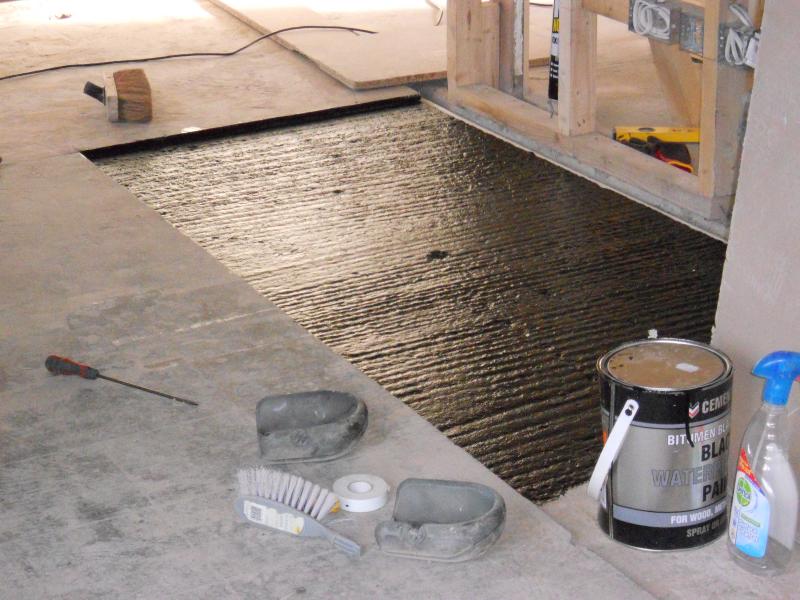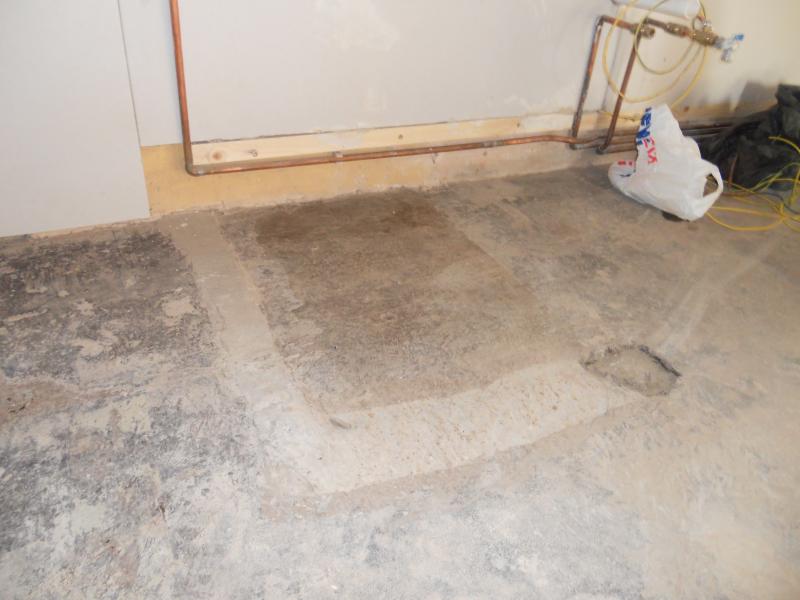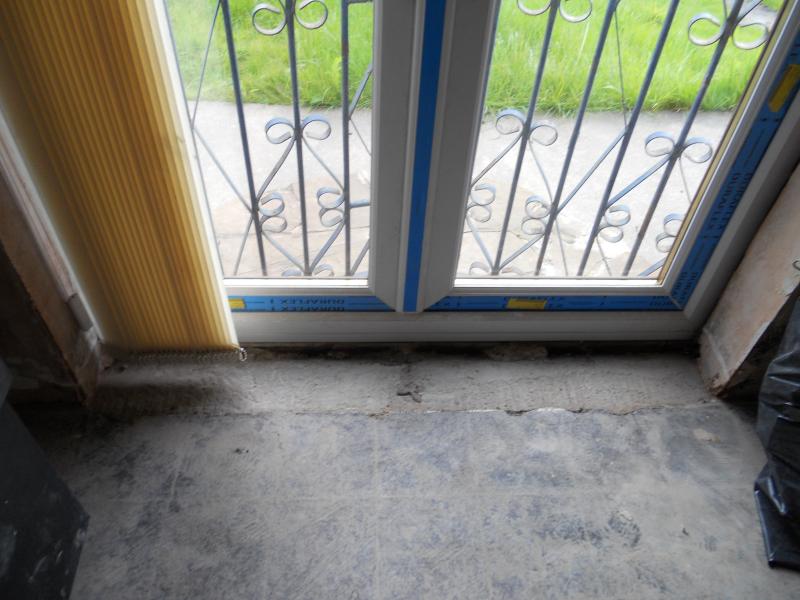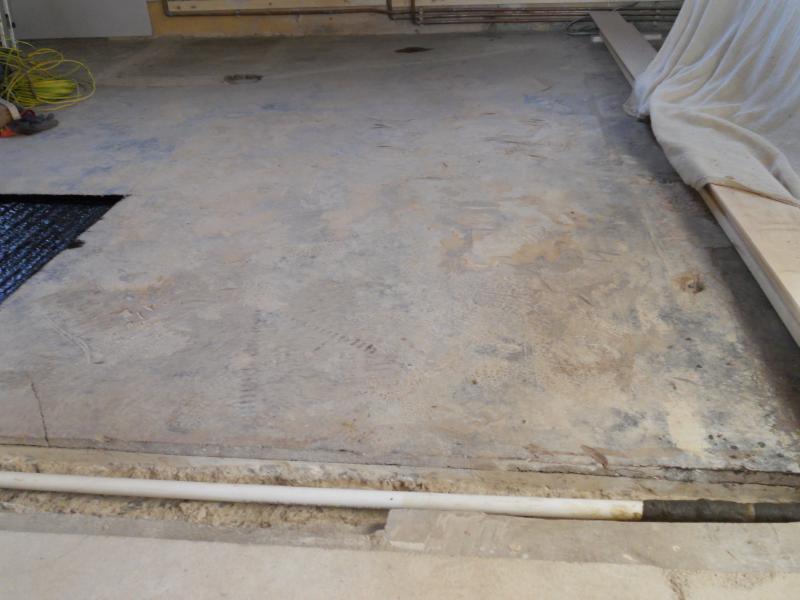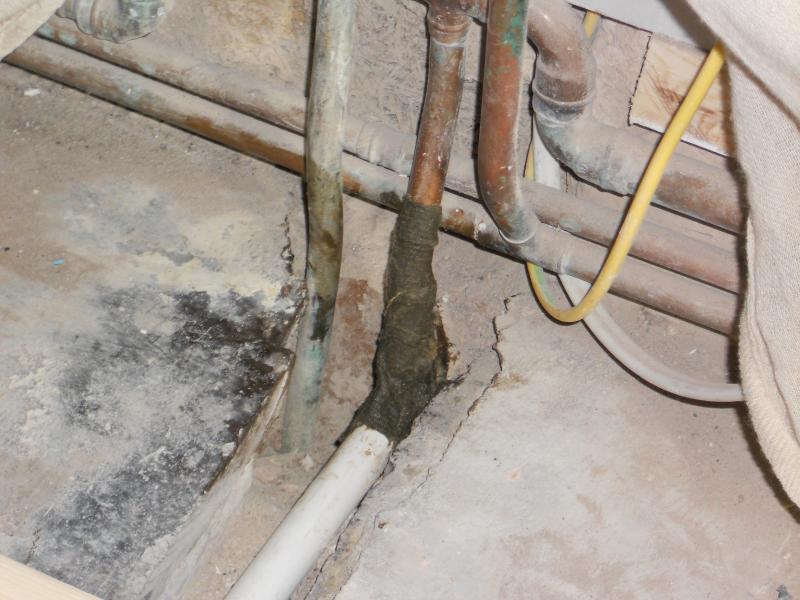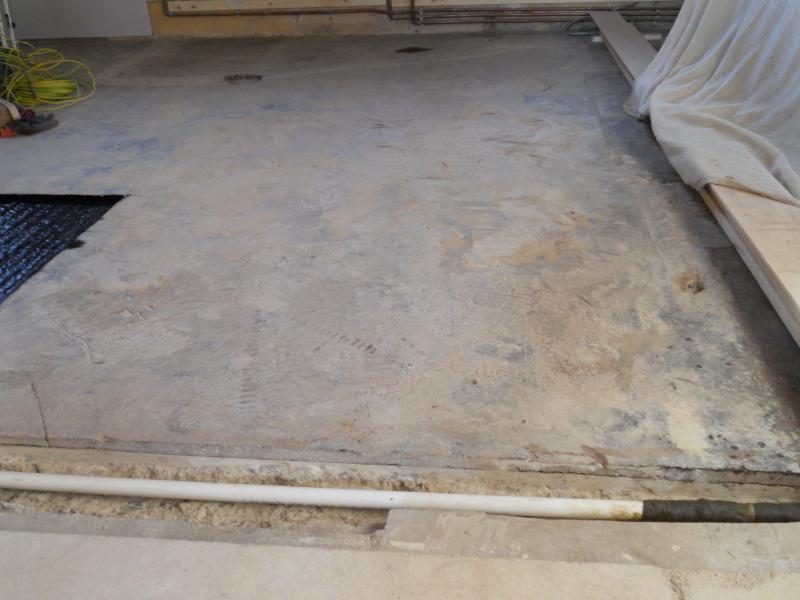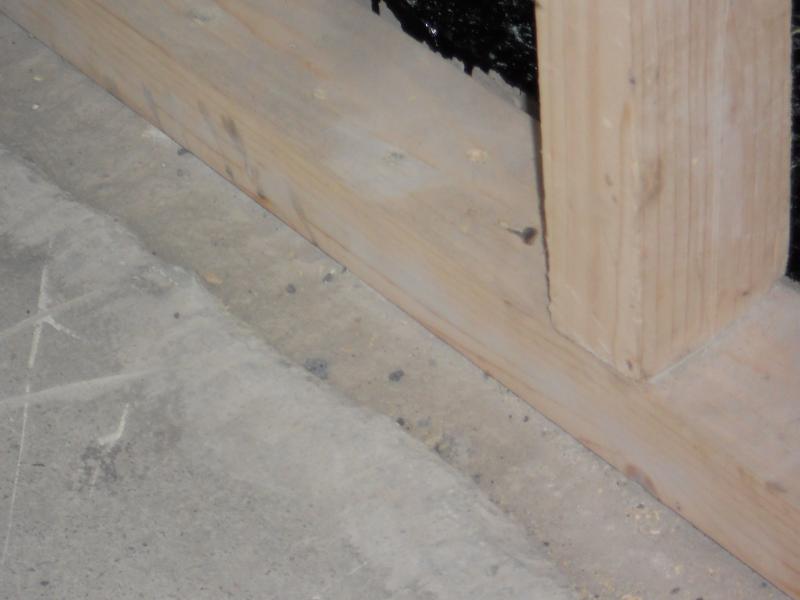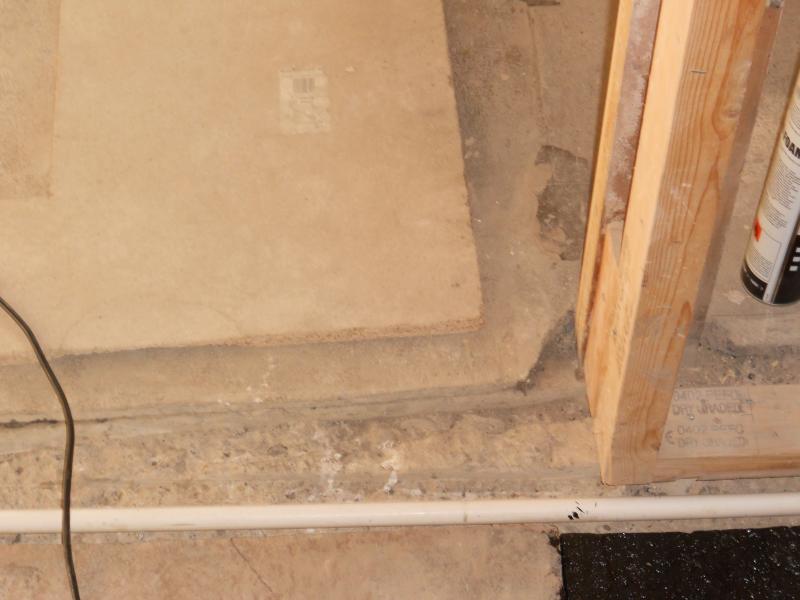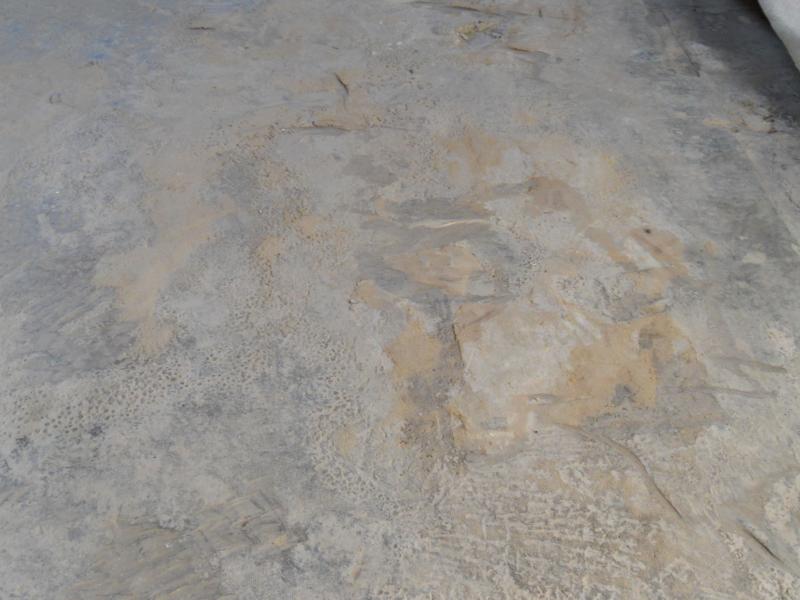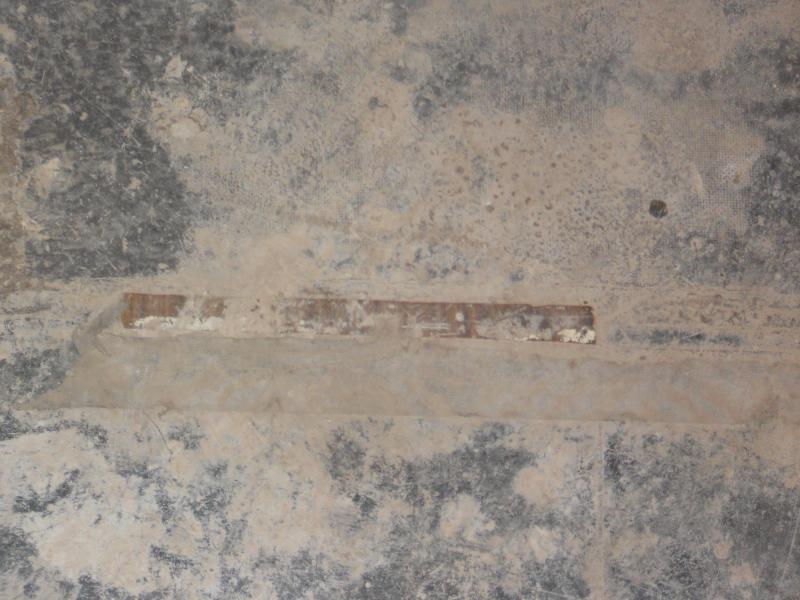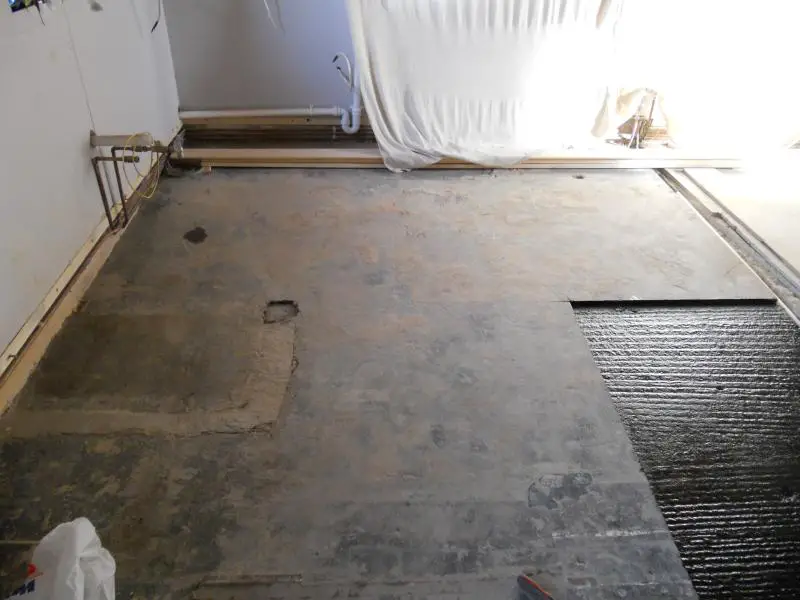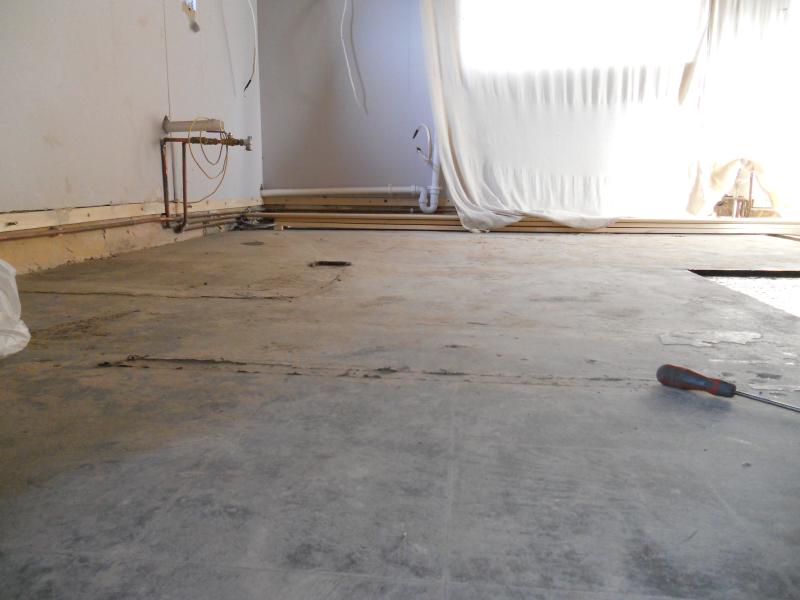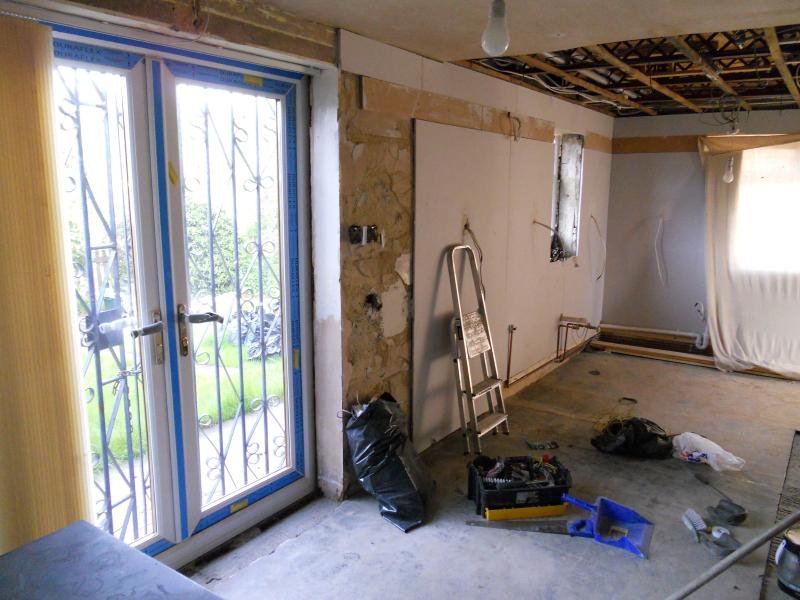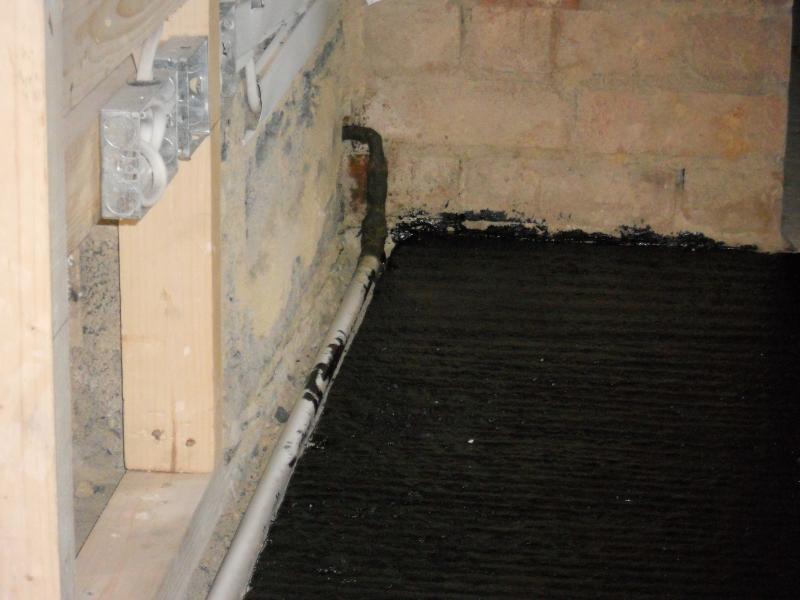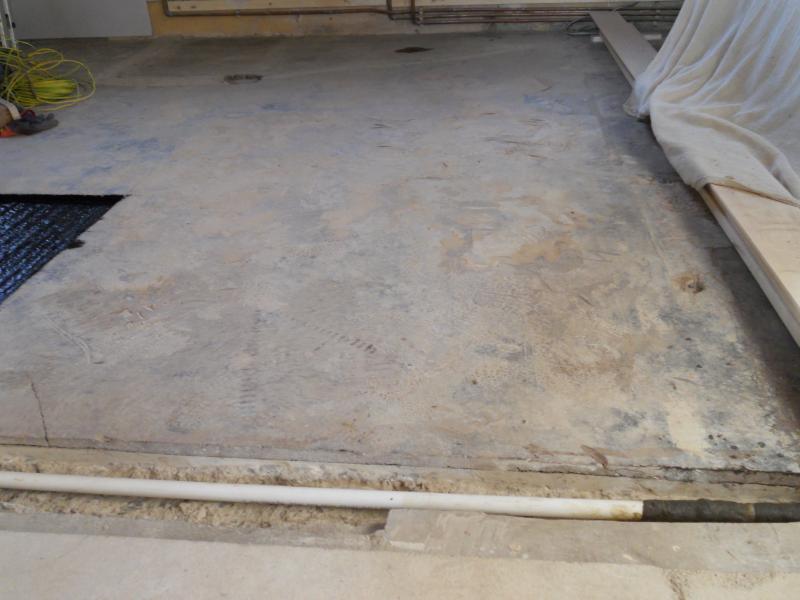i have had my kitchen dining room replastered throughout leaving dry plaster in places over the floor etc im having my floor tiled throughout 26 square metres approx after some concrete laid in a 2 metre section and self levelling in other places to get the floor flat...im already scraping the dry plaster off the floor to prep the floor etc is there any recomended techniques used besides this to clean prep the sub floor b4 tiling ? cheers again
You are using an out of date browser. It may not display this or other websites correctly.
You should upgrade or use an alternative browser.
You should upgrade or use an alternative browser.
cleaning preparing floor to be tiled ?
- Thread starter george07
- Start date
Sponsored Links
This’ll be the ramsey black polished porcelain tiles then  So are you now planning to bring in a tiler or DIY? Not really sure why you started a new thread, it would have been easier to keep track of things if you had continued posting on your original.
So are you now planning to bring in a tiler or DIY? Not really sure why you started a new thread, it would have been easier to keep track of things if you had continued posting on your original.
25 sq.m is quiet a large area & I repeat my questions on your other thread;
Additionally, what is this 2 metre section, part of a new slab or just filling in? If so how thick is it going to be? Conventional sand/cement screed shouldn’t be laid less than 40-50mm as there is a risk it will delaminate or even break up, you may be better using a suitable SLC or bonded screed. You can’t tile over a new screed until it’s fully dry, allow one day per 1mm thickness.
Regards the SLC, you’d do better to level the whole floor rather than patching, this will provide a continuous tile base of known quality rather than a patchwork of different substrates.
Sometimes a few photos of the area are a great help!
25 sq.m is quiet a large area & I repeat my questions on your other thread;
I see the rooom is L shape, what are the room sizes? Is the slab continuious under where the wall was removed or is it laid as two separate slabs with a joint. You may need an expansion joint & possiby an uncoupling membrane if it’s laid as two separate slabs.
Additionally, what is this 2 metre section, part of a new slab or just filling in? If so how thick is it going to be? Conventional sand/cement screed shouldn’t be laid less than 40-50mm as there is a risk it will delaminate or even break up, you may be better using a suitable SLC or bonded screed. You can’t tile over a new screed until it’s fully dry, allow one day per 1mm thickness.
Regards the SLC, you’d do better to level the whole floor rather than patching, this will provide a continuous tile base of known quality rather than a patchwork of different substrates.
Sometimes a few photos of the area are a great help!
richard im just asking the tilers any tips on the prep work/cleaning etc of my concrete floor before i set my tiler the task of tiling the large area...i want to get him on with it asap after the/concrete & self levelling work is done, + i cant upload a photo at minute as i cant find my usb cable for the digi-cam! but i did upload it in another post a while ago..not sure which post it was although i will check & let you know...tbh i would prefer to use eg wickes deep fill slc as it does up to 50mm and i am more confident doing it this way than i am sand/cement mix and getting it right tbh but i have had advice on another thread to do it the sand/cement method by mcmilin who is very knowledgible
I didn’t spot or post on that thread but know Micilin as a knowledgeable contributor. With this additional info, things are becoming clearer & starting to make more sense. A little tip; if you start new thread about what is effectively the same project, stick a link in your new thread so that those replying see the history & understand the whole picture; floor preparation is particularly important if your planning to tile. The reason your conventional screed cracked & delaminated is that it was laid too thin & what Micilin has advised is to replace it with a bonded screed; this is the same as advice I’ve just posted so that’s confirmation. But you could also use a deep fill flexible SLC; http://www.ultra-floor.co.uk/products.jsp?productCategoryID=14 The advantage it has is that it’s relatively quick setting; conventional sand/cement screed will not reach full strength until about 28 days & will take 1 day per mm to dry out. Whatever; if you go with a bonded screed, I would still advise you go over the whole floor with an SLC. This will give you a flat & level floor which is going to be important with the size of tiles you’re laying & provide a uniform substrate to tile over; having a patchwork of different tile bases is not ideal. Use a quality flexibly powder adhesive over SLC. Priming will depend on what you end up doing with the floor & your chosen adhesive manufacturers recomendations. You should leave this decision to your tiler but never use conventional PVA as a tile primer.
I’m still unsure about the overall integrity of the floor area; if it consists of several different slabs/screeds laid at different times or they are cracked, you may get differential movement in the floor which will crack the tiles if you tile directly onto the screed; this is why I keep asking how the floor is constructed. A flexible SLC over the screed will provide uncoupling to a certain degree but if the overall slab integrity is in any doubt, you would be wise to lay an uncoupling membrane;
http://www.schluter.co.uk/produkt.aspx?doc=6-1-ditra.xml&pg=funktion
With an area that size & depending on the shape, you may well need an intermediate expansion joint if a straight line tile run exceeds around 7m or where two large floor areas form an L shape room.
Finally choose your tiler very carefully; some who say they are have surprisingly little knowledge regarding floor preparation or will skimp it. Unbelievably, some can’t even tile as a quick browse through the Forum archive posts will confirm! Get personal recommendation if you can & look at previous work. You can always post back here for advice/recommendations on preparation or specific tiling products.
I’m still unsure about the overall integrity of the floor area; if it consists of several different slabs/screeds laid at different times or they are cracked, you may get differential movement in the floor which will crack the tiles if you tile directly onto the screed; this is why I keep asking how the floor is constructed. A flexible SLC over the screed will provide uncoupling to a certain degree but if the overall slab integrity is in any doubt, you would be wise to lay an uncoupling membrane;
http://www.schluter.co.uk/produkt.aspx?doc=6-1-ditra.xml&pg=funktion
With an area that size & depending on the shape, you may well need an intermediate expansion joint if a straight line tile run exceeds around 7m or where two large floor areas form an L shape room.
Finally choose your tiler very carefully; some who say they are have surprisingly little knowledge regarding floor preparation or will skimp it. Unbelievably, some can’t even tile as a quick browse through the Forum archive posts will confirm! Get personal recommendation if you can & look at previous work. You can always post back here for advice/recommendations on preparation or specific tiling products.
Sponsored Links
yeah cheers richard im glad you confirm i can use slc to fill the 20mm section of concreting as time is against me so cant wait 28 days or so for a screed to dry out etc...it is part of the existing concrete slab i am filling as ive taken out a brick fireplace and base alongside a staircase breezeblock wall...i will search for my usb cable and try upload images or they might still be on my laptop in files,the floor construction is a concrete slab in kitchen which has a dip init so will need slc and the return l shape 2metres x 1.5 metres approx is also a concrete slab but has a slight ridge from where a dividing wall used to be yrs ago..although the dip in the kitchen needs levelling up to this point so should take most of the ridge out...think ive found my photos richard for you to look at  the new stood wall is where ive taken the understaircase wall back to...but as i cut a channel out for a new gas pipe the section of flooring formely under the stairs was higher than the kitchen floor so we cut a section out,i then applied some bitumen paint to restore dpm..thats about the extent of it tbh,have a look at all the photos it should explain everything ive tried to get across lol & let me know what you think,
the new stood wall is where ive taken the understaircase wall back to...but as i cut a channel out for a new gas pipe the section of flooring formely under the stairs was higher than the kitchen floor so we cut a section out,i then applied some bitumen paint to restore dpm..thats about the extent of it tbh,have a look at all the photos it should explain everything ive tried to get across lol & let me know what you think,
ive bought 4 bags of wickes deep fill slc today 4 bags price of 3 £45 it does 2-50mm depth adviseable in 1 layer it says.. at 20mm depth it does approx 0.5 metres & i also bought some slc floor primer wickes again..
it does 2-50mm depth adviseable in 1 layer it says.. at 20mm depth it does approx 0.5 metres & i also bought some slc floor primer wickes again..
ive already got a whisk for the drill and a soft bucket to mix in..so ready to go once ive cleaned after ive cleaned rest of the kitchen floor as ive already started this task..any more tips on applying the slc greatly appreciated richard and thanks again
ive bought 4 bags of wickes deep fill slc today 4 bags price of 3 £45
ive already got a whisk for the drill and a soft bucket to mix in..so ready to go once ive cleaned after ive cleaned rest of the kitchen floor as ive already started this task..any more tips on applying the slc greatly appreciated richard and thanks again
Sorry still can work out the shape of the room from the photos, is it just a square room?
Don’t just expect to pour on the SLC & walk away; it needs some encouragement with a float. It looks a bit raged in places; as I said before, I would advise you go over the lot after filling the 20mm section rather than just patch it.
Don’t just expect to pour on the SLC & walk away; it needs some encouragement with a float. It looks a bit raged in places; as I said before, I would advise you go over the lot after filling the 20mm section rather than just patch it.
its an l shaped room richard the main part kitchen/dining room is approx 6 x 2 metres & the other part return leg measures approx 2 x 1.5 metres and is more of an entrance walking area into the main kitchen all open plan though i will try upload more pics of it all to give you a better idea,yeah i have a float to spread it..do i mix 1 bag pour it on floor spread it then do the same with the next bag or do i mix several bags at once ? + is it a 2 man job would i be better with a helper
im going to fill the section and then go over the ragged floor as you say tapering it in with the totally flat part of the kitchen/diner floor...im not bothered what it costs in mats just want a decent flat sub-floor from which to be able to tile on & finally do you think the 500 x 500mm b & q black polished tiles im looking at will be hard wearing enough to lay long term bearing in mind if i rent it out tenants moving washers tables around possibly scraping the floor etc cheers again
& finally do you think the 500 x 500mm b & q black polished tiles im looking at will be hard wearing enough to lay long term bearing in mind if i rent it out tenants moving washers tables around possibly scraping the floor etc cheers again
im going to fill the section and then go over the ragged floor as you say tapering it in with the totally flat part of the kitchen/diner floor...im not bothered what it costs in mats just want a decent flat sub-floor from which to be able to tile on
I thought you said the area was 26 sq/m; I only make that 15 sq/m!its an l shaped room richard the main part kitchen/dining room is approx 6 x 2 metres & the other part return leg measures approx 2 x 1.5 metres and is more of an entrance walking area into the main kitchen all open plan though
If you can get someone to help it will be better. They can start mixing the second batch ½ way through while your laying/leveling the first, allowign you to work continuiously. Otherwise mix up one bag at a time & clean your bucket & tools thoroughly between mixes.do i mix 1 bag pour it on floor spread it then do the same with the next bag or do i mix several bags at once ? + is it a 2 man job would i be better with a helper
With coverage of 0.5sq/m at 20m, filling 2 sq/m will take all 4 bags & then some; I don’t think you have enough SLC especially to give a thin covering/leveling layer over the rest of the floor as well!im going to fill the section and then go over the ragged floor as you say tapering it in with the totally flat part of the kitchen/diner floor...im not bothered what it costs in mats just want a decent flat sub-floor from which to be able to tile on
I replied to this bit on your other thread.finally do you think the 500 x 500mm b & q black polished tiles im looking at will be hard wearing enough to lay long term bearing in mind if i rent it out tenants moving washers tables around possibly scraping the floor etc
richard theres a few more metres tiling into 2 cupboards but maybe not 26 sq metres ive allowed for wastage + tiles to leave in loft for the future in case of replacements etc
the 4 bags are just for the 2 metre section i will get a load more bags to do the rest i can take any surplus back to wickes for a refund no probs
i can take any surplus back to wickes for a refund no probs
yes i seen the reply on the other thread cheers
the floor is very ragged in the middle im still scraping the old seems like 2/3mm plywood or something from yrs ago up...nightmare tbh been doing it most of w.e
the 4 bags are just for the 2 metre section i will get a load more bags to do the rest
yes i seen the reply on the other thread cheers
the floor is very ragged in the middle im still scraping the old seems like 2/3mm plywood or something from yrs ago up...nightmare tbh been doing it most of w.e
might be to late here...but i would not use a slc here i would advise..
Ardex A45 for this job..
if using a slc then you would be wanting to beef it up with granite chipping,but i would use a good branded slc,not one from the sheds.
as for tile adhesive use a PTB (pourable thick bed)...this will help with the ragged/uneven areas.
Ardex A45 for this job..
if using a slc then you would be wanting to beef it up with granite chipping,but i would use a good branded slc,not one from the sheds.
as for tile adhesive use a PTB (pourable thick bed)...this will help with the ragged/uneven areas.
tictic its not 2 late as i havent filled it as yet as been working over at work and not been on the house much at all apart from jobs in lounge...ive got a guy who deals in this sort of work for a living coming around fri night to advise and quote me to do it...he has the same type of house nxt street up & has probably screeded several floors on the estate over the years as he is well known....im sure he will advise on a bonded screed or i will stipulate that is the way i want it done! lol
i still need to use slc over the dip in the floor + over ragged areas are you saying wickes deep fill slc isnt good enough quaity ? as i can take it back if need be..i also have 4 x 25kg bags of evo stik up to 5mm slc ? + can you name a ptb tile adhesive and where i purchase from cheers again
i still need to use slc over the dip in the floor + over ragged areas are you saying wickes deep fill slc isnt good enough quaity ? as i can take it back if need be..i also have 4 x 25kg bags of evo stik up to 5mm slc ? + can you name a ptb tile adhesive and where i purchase from cheers again
DIYnot Local
Staff member
If you need to find a tradesperson to get your job done, please try our local search below, or if you are doing it yourself you can find suppliers local to you.
Select the supplier or trade you require, enter your location to begin your search.
Please select a service and enter a location to continue...
Are you a trade or supplier? You can create your listing free at DIYnot Local
Sponsored Links


